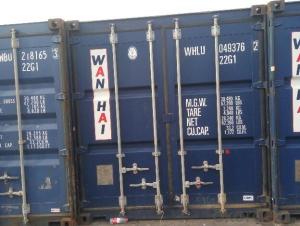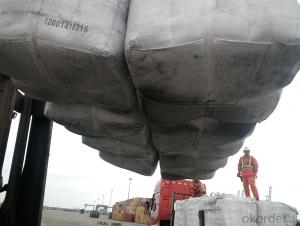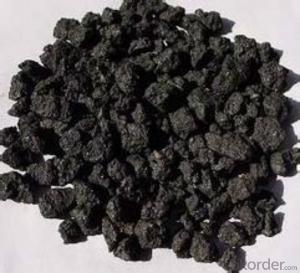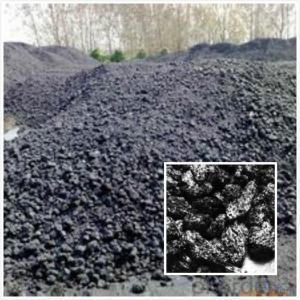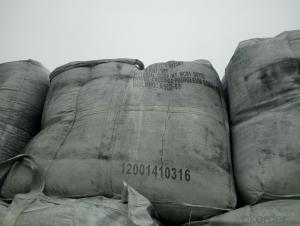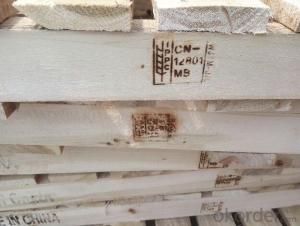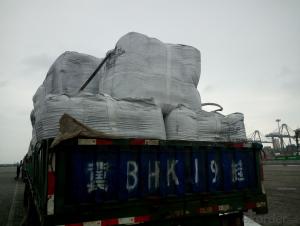Calcined Petroleum Coke with Ash 0.7%max
- Loading Port:
- Shanghai
- Payment Terms:
- TT OR LC
- Min Order Qty:
- 19.8
- Supply Capability:
- 1008 m.t./month
OKorder Service Pledge
OKorder Financial Service
You Might Also Like
Intrduction
Carbon additive to ningxia production of anthracite as raw material, after washing, crushing, high temperature calcination, filter, etc. Craft refined and become.This is after the anthracite calcination generated high carbon content and low volatile component of the new product, is an ideal raw material to make steel.
Calcined Petroleum Coke comes from delayed coke which extracted from oil refinery. Although Calcined Petroleum Coke contains a little bit higher level of sulfur and nitrogen than pitch coke, the price advantage still makes it widely used during steel-making and founding as a kind of carbon additive/carburant.
Features
In the smelting process for reducing agent. Performance: replace the traditional oil carbon additive, decrease the cost of steelmaking. Features: low ash. low sulfur,low phosphorus, high calorific value. High ratio resistance,high mechanical strength,high chemistry activity. It is mainly used for metallurgy reductant inoculants, casting, refractory materials, machinery, electronics and other fields.Steady supply
1) high absorption rate, it can be absorbed up to 90%.
2) absorbed more quickly than other carbon additive; no residue remains in furnace.Good quality
3) low Sulfur, the lowest can reach below 0.20%; low nitrogen, normally below 200ppm (0.02%)
Specifications
CPC | |||
F.C.% | 98.5MIN | 98.5MIN | 98MIN |
ASH % | 0.8MAX | 0.8MAX | 1MAX |
V.M.% | 0.7 MAX | 0.7 MAX | 1 MAX |
SULFUR % | 0. 5MAX | 0. 7MAX | 1MAX |
MOISTURE % | 0.5MAX | 0.5MAX | 1MAX |
Pictures


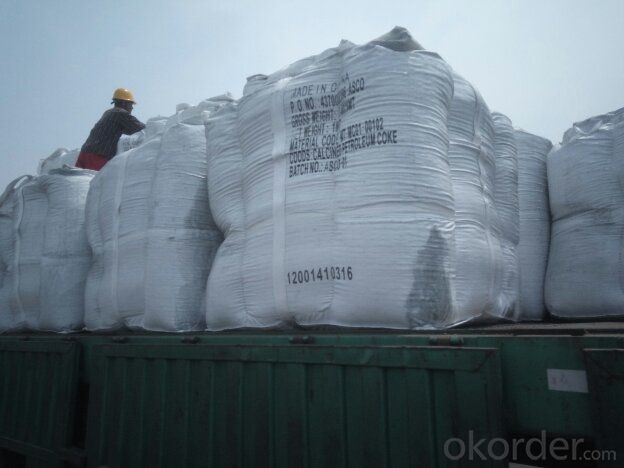

FAQ:
(1)CPC could be as fuel
Petroleum coke is a material relatively low in cost and high in heat value and carbon content with good chemical stability, making it an efficient and costeffective fuel for producing metal, brick and related products.
(2)CPC could be as Graphite Electrodes
Graphite can be produced from lowsulfur needle petroleum coke, which must be heated above 5,432 degrees Fahrenheit.
(3)CPC could be as Anodes
Calcined petroleum coke, often low in sulfur and metallic impurities, is used to make anodes for
the smelting industry.Calcined petroleum coke is mixed with coal tar pitch in the production of
anodes.
- Q: What is the density of carbon steel and alloy steel?
- Manganese steel 7.8115CrA 7.74 steel20Cr, 30Cr, 40Cr steel, 7.8238CrA 7.80 steelChromium vanadium, chromium nickel, chromium nickel molybdenum, chromium, manganese, silicon, manganese, nickel chromium manganese silicon silicon steel 7.85Chromium nickel tungsten steel 7.80
- Q: What are the challenges and opportunities of transitioning to a low-carbon economy?
- The challenges of transitioning to a low-carbon economy include the need for significant investments in renewable energy infrastructure, the potential loss of jobs in fossil fuel industries, and the complexity of implementing new policies and regulations. Additionally, there may be resistance from certain industries or regions that heavily rely on carbon-intensive practices. However, this transition also presents numerous opportunities. It allows for the development of sustainable and innovative industries, such as renewable energy technologies, electric vehicles, and energy-efficient buildings. It can create new job opportunities in these emerging sectors and stimulate economic growth. Moreover, transitioning to a low-carbon economy helps mitigate climate change, reduce air pollution, and improve public health, leading to a more sustainable and resilient future.
- Q: Why is carbon content of stainless steel low?
- This is because the main alloying elements of martensite chromium stainless steel is iron, chromium and carbon, such as Cr is greater than 13%, there is no gamma phase, such as single-phase alloy ferritic alloy, in any heat treatment system does not produce martensite, therefore must join the forming elements of austenite, Fe-Cr two alloy, to expand, C and N are effective elements, C, N elements adding alloy allows higher CR content. Chromium is one of the most important essential elements in martensitic chromium stainless steels, except chromium. In fact, martensitic chromium stainless steel is a kind of iron, chromium and carbon three element alloy C.However, the corrosion resistance of martensitic stainless steel mainly depends on the content of chromium, but the carbon in the steel due to the formation of stable chromium carbide with chromium, but also indirectly affect the corrosion resistance of steel. Therefore, in 13%Cr steel, the lower carbon content, the higher corrosion resistance. In 1Cr13, 2Cr13, 3Cr13 and 4Cr13 four kinds of steel, the corrosion resistance and strength of the order is just the opposite. In addition, carbon has an effect on the mechanical properties of stainless steel matrix.
- Q: Why can carbon fiber in addition to static electricity ah?
- Carbon fiber is a conductive substance, static electricity can not accumulate. Therefore, in the production of cloth, some of the anti - static agent, processing clothes can be anti-static. People who work at gas stations must pass on antistatic clothing so that electrical sparks from static electricity do not explode.
- Q: How do plants use carbon dioxide?
- Plants use carbon dioxide through a process called photosynthesis, which is vital for their survival. During photosynthesis, plants take in carbon dioxide from the air through small openings on their leaves called stomata. Inside the leaves, carbon dioxide combines with water, which is absorbed by the roots, to produce glucose and oxygen. The glucose is used by the plant as a source of energy to carry out various metabolic processes and to grow. Additionally, plants store excess glucose in the form of starch for future use. The oxygen produced during photosynthesis is released back into the atmosphere, which is crucial for the survival of other living organisms, including humans, as we depend on oxygen for respiration. Therefore, plants play a crucial role in maintaining the balance of carbon dioxide and oxygen in the atmosphere, making them essential for life on Earth.
- Q: How are carbon nanotubes used in various applications?
- Carbon nanotubes are incredibly versatile and have found numerous applications across various fields. In electronics, carbon nanotubes are used as an alternative to traditional silicon-based materials, enabling the development of smaller, faster, and more efficient devices. They can be used as the building blocks for transistors, interconnects, and memory devices. In the field of energy, carbon nanotubes are being explored for their potential in improving the performance of batteries and supercapacitors. Their high electrical conductivity and large surface area make them ideal for enhancing energy storage and facilitating faster charge and discharge rates. Carbon nanotubes also have applications in the field of materials science. They can be incorporated into composites to enhance their strength, stiffness, and electrical conductivity. These composites find use in aerospace, automotive, and construction industries, where lightweight and durable materials are sought after. Additionally, carbon nanotubes are being investigated for their potential in the field of medicine. Due to their unique properties, they can be utilized for drug delivery systems, sensors, and imaging technologies. They have the ability to selectively target cancer cells, enabling more efficient and targeted treatment options. In summary, carbon nanotubes have an extensive range of applications, including electronics, energy storage, materials science, and medicine. Their remarkable properties make them highly desirable for enhancing performance and enabling advancements in various industries.
- Q: How does carbon affect the quality of indoor air?
- Carbon can have a significant impact on the quality of indoor air. One of the main contributors to carbon in indoor air is carbon dioxide (CO2), which is produced through the process of respiration by humans and animals. High levels of CO2 can cause discomfort, as it can lead to feelings of drowsiness, headaches, and difficulty concentrating. In addition to CO2, carbon monoxide (CO) is another carbon compound that can be present in indoor air, mainly due to the incomplete combustion of fossil fuels in stoves, fireplaces, and furnaces. Carbon monoxide is highly toxic and can be life-threatening if present in high concentrations. Apart from these direct sources of carbon, indoor air can also be affected by volatile organic compounds (VOCs), such as formaldehyde, benzene, and toluene. These VOCs are released from various sources like building materials, furniture, cleaning products, and tobacco smoke. They can have adverse health effects, including eye, nose, and throat irritation, headaches, dizziness, and in some cases, even long-term health risks like cancer. To maintain good indoor air quality, it is essential to monitor and control the levels of carbon compounds in the air. Proper ventilation is crucial to ensure fresh air circulation and reduce the concentration of CO2 and other pollutants. Regular maintenance and inspection of fuel-burning appliances can prevent the build-up of carbon monoxide. Using low-VOC or VOC-free materials and products, as well as avoiding smoking indoors, can help minimize the release of harmful carbon compounds.
- Q: How do you stick carbon fabric?
- 6, maintenance(1) after sticking the carbon fiber cloth, it is necessary to conserve 24h naturally to reach initial curing, and ensure that the curing period is free from interference(2) before each process, the resin should be covered with plastic film before it is cured so as to prevent sand or rain from attacking(3) when the temperature of the resin curing is reduced to less than 5 degrees, low temperature curing resin can be adopted, or effective heating measures can be adopted(4) CFRP after natural curing required to meet the design strength of time: the average temperature is 10 DEG C, 2 weeks; the average temperature is 10 degrees centigrade above 20 DEG C, 1 to 2 weeks; the average temperature is higher than 20 degrees in 1 weeks. During this period should be to prevent the patch part by the hard impact.7. PaintingThe coating shall be done after the initial curing of the resin and shall comply with the relevant standards and construction requirements for the coating used
- Q: What are the different types of carbon-based food additives?
- The food industry commonly utilizes various carbon-based food additives for different purposes. These additives have multiple functions, including enhancing flavor, improving texture, and extending the shelf life of food products. Here are a few examples: 1. Activated Carbon: Used as a food coloring agent, activated carbon is a porous form of carbon with high adsorption properties. It is often employed to give black color to specific food and beverages, such as black food coloring or black lemonade. 2. Carbon Black: Also known as vegetable carbon or vegetable black, this additive is derived from charcoal and serves as a natural food coloring agent. It is frequently utilized to provide a dark black or grey color to foods like black licorice, ice cream, and bakery products. 3. Carbon Dioxide: Though not directly added as an additive, carbon dioxide gas is utilized in food processing and packaging to prolong the shelf life of certain products. It is commonly present in carbonated beverages to create the characteristic fizz and is also used in modified atmosphere packaging to preserve the freshness of specific foods. 4. Carbonated Water: This refers to carbon dioxide gas dissolved in water, resulting in carbonic acid. Carbonated water is often used as a base for soft drinks and beverages, imparting effervescence and a refreshing taste. 5. Carbonates: Calcium carbonate and sodium carbonate are examples of carbonates used as acidity regulators in food products. They aid in maintaining the pH balance and controlling the acidity of certain foods, such as canned vegetables, fruit preserves, and pickles. 6. Carbon-based Preservatives: Sorbic acid and propionic acid, among other carbon-based additives, act as preservatives to prevent the growth of molds, bacteria, and yeasts in food products. They contribute to extending the shelf life of products like bread, cheese, and processed meats. It is essential to note that while carbon-based food additives are generally considered safe for consumption, it is advisable to read food labels and seek guidance from professionals, such as dietitians or healthcare providers, if any concerns or specific dietary restrictions arise.
- Q: How does carbon affect the acidity of oceans?
- The acidity of oceans is greatly influenced by carbon dioxide (CO2). Human activities like burning fossil fuels and deforestation release CO2 into the atmosphere, a significant portion of which is absorbed by the oceans. This absorption, known as ocean acidification, causes an increase in hydrogen ions in the water, leading to lower pH levels and higher acidity. When CO2 dissolves in seawater, it combines with water molecules to create carbonic acid (H2CO3). This chemical reaction releases hydrogen ions (H+), which elevate the water's acidity. The increased acidity disrupts the delicate chemical balance necessary for life in the ocean, especially reactions involving calcium carbonate. Calcium carbonate plays a vital role in the formation of shells and skeletons for various marine organisms, such as corals, shellfish, and certain plankton. As ocean acidity rises, it becomes more challenging for these creatures to construct and maintain their calcium carbonate structures. This can result in stunted growth, weakened shells, and heightened susceptibility to predators and diseases. Ocean acidification also has implications for the entire marine food chain. Many species depend on shell-forming organisms as a food source or as habitats, and their decline can have a ripple effect on the entire ecosystem. Additionally, acidification can disrupt the balance of phytoplankton, which are microscopic plants crucial for marine food chains. Furthermore, carbon dioxide in the ocean can interact with water to generate bicarbonate ions (HCO3-) and carbonate ions (CO32-). These ions are crucial for maintaining proper pH levels and enabling marine organisms to regulate their internal chemistry. However, as CO2 levels increase, the concentration of carbonate ions decreases, making it more challenging for organisms to obtain the carbonate they need to build their shells and skeletons. Overall, the impact of carbon on ocean acidity is significant and has far-reaching consequences for marine life. It is essential to reduce carbon emissions and implement measures to mitigate and adapt to the effects of ocean acidification in order to safeguard the health and biodiversity of our oceans.
Send your message to us
Calcined Petroleum Coke with Ash 0.7%max
- Loading Port:
- Shanghai
- Payment Terms:
- TT OR LC
- Min Order Qty:
- 19.8
- Supply Capability:
- 1008 m.t./month
OKorder Service Pledge
OKorder Financial Service
Similar products
Hot products
Hot Searches
Related keywords
